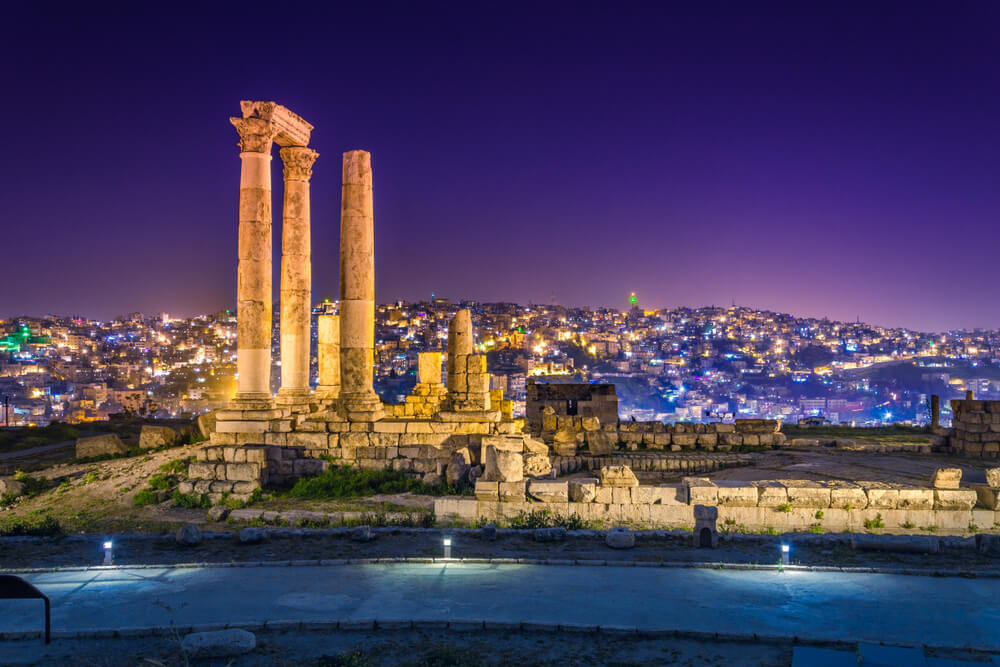AMAAN
Amman, sometimes spelled Ammann (Arabic عمان ʿAmmān), is the capital, largest city, and economic center of the Hashemite Kingdom of Jordan. The city, which has served as both the modern and ancient capital, has a population of nearly 1.04 million, with 2.13 million in the metropolitan area known as Greater Amman. Due to the city’s modern-day prosperity and temperate climate, almost half of Jordan’s population is concentrated in the Amman area.
Amman is a city of contrasts, a unique blend of old and new; its modern buildings blend with the remnants of ancient civilizations. It is believed to be one of the oldest continuously inhabited cities in the world. Numerous Biblical references are made to Amman, the Ammonite capital of Rabbath-Ammon.
The city was originally built on seven hills, but it now spans over an area of 19 hills. Its downtown area sits at the bottom of four of its original seven hills, and is the location of most of the city’s noteworthy sites. These include the remains of the ancient citadel, the adjoining archaeological museum, and a large, finely preserved Roman amphitheatre, which once seated 6,000. There are additional numerous sites of interest, Biblical, historical, or geological, which are in close proximity to Amman.

